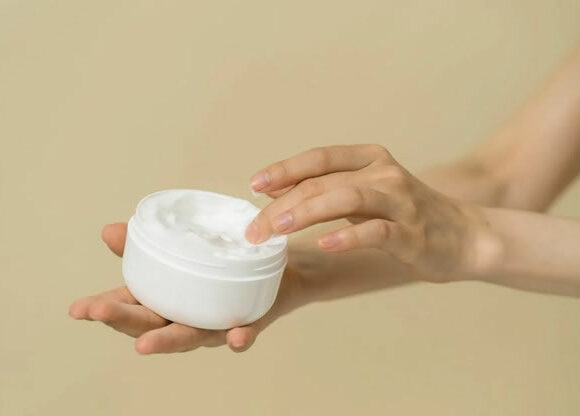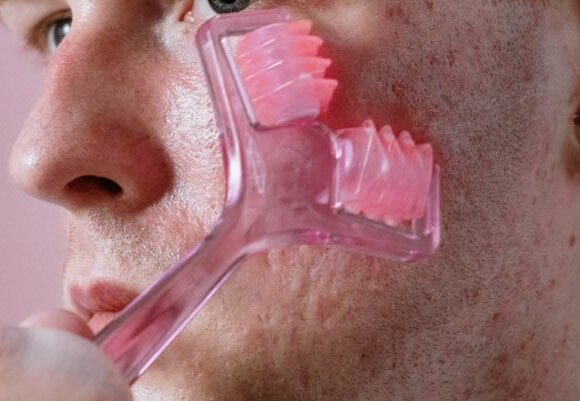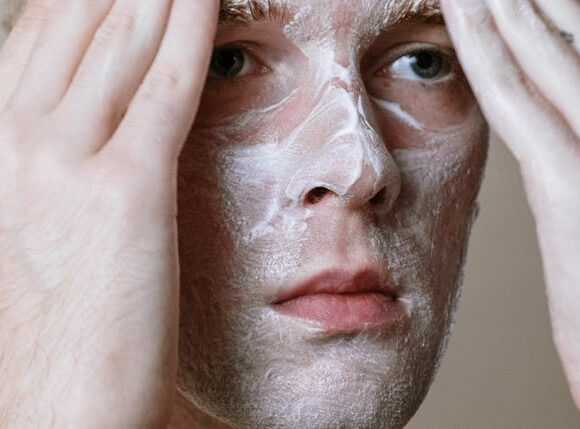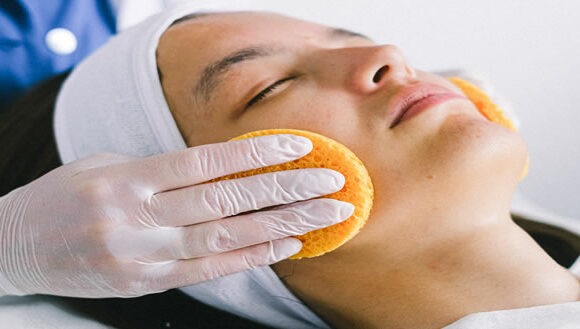
Table Of Contents
Fungal acne, or pityrosporum folliculitis, is a frustrating skin condition that can cause discomfort and embarrassment. While benzoyl peroxide is often hailed as a powerful solution for treating acne, many people wonder whether it is also effective for combating fungal acne.
This article will explore the relationship between benzoyl peroxide and fungal acne, examining its potential benefits and limitations. By understanding the nature of fungal acne and exploring alternative treatment options, you can make informed decisions about effectively addressing this unique and stubborn skin condition.
Understanding Fungal Acne And Its Causes

Fungal acne, or pityrosporum folliculitis, is a skin condition caused by an overgrowth of yeast called Malassezia. Unlike traditional acne vulgaris, which is caused by bacteria, fungal acne is triggered by the same fungus responsible for dandruff and seborrheic dermatitis. This acne typically appears as tiny, itchy bumps or blemishes that may resemble bacterial acne breakouts.
The overgrowth of Malassezia yeast occurs when there is an imbalance in the skin’s microbiome due to a weakened immune system, excessive sweating in hot weather, nutritional imbalances, or long-term oral antibiotics use.
These factors create an environment where the yeast thrives, leading to the development of fungal acne.
People with oily skin who frequently sweat or use oil-rich creams are often more prone to experiencing fungal acne outbreaks.
We also wrote a blog post about Fungal Acne vs. Closed Comedones: What’s The Difference?
Treating Fungal Acne: The Role Of Benzoyl Peroxide

When you treat fungal acne, benzoyl peroxide is a commonly discussed topical treatment. However, it’s important to note that benzoyl peroxide primarily targets bacterial acne and may not be the best choice for treating fungal acne. Let’s explore the reasons why.
Benzoyl Peroxide’s Effectiveness Against Fungal Acne
1. Benzoyl Peroxide’s Anti-Bacterial Properties
Benzoyl peroxide is known for killing acne-causing bacteria on the skin’s surface. However, fungal acne is not caused by bacteria but rather by an overgrowth of yeast. Therefore, benzoyl peroxide may not directly address the underlying cause of fungal acne.
2. Drying And Irritating Effects
Benzoyl peroxide has a drying effect, benefiting those with oily skin or clogged pores. However, this drying effect can also strip the skin of natural oils and disrupt the balance of its moisture barrier (acid mantle), leading to potential irritation and inflammation.
Furthermore, fungal acne is often associated with an overproduction of oil [1], which may lead one to use oil-reducing products. However, over-drying the skin can worsen fungal acne breakouts.
3. Insufficient Antifungal Properties
While benzoyl peroxide has some mild antifungal properties, they are less effective against Malassezia yeast than specific antifungal medications. Using benzoyl peroxide alone may not adequately treat the fungal overgrowth responsible for fungal acne. Therefore, it is crucial to consider other treatment options specifically designed to target yeast infections.
Learn how to combat fungal acne on your back with our informative article.
Effective Treatments For Fungal Acne
1. Antifungal Medications
In severe cases of fungal acne, oral antifungal medications may be prescribed by a dermatologist. These medications work internally to combat yeast overgrowth and are more effective than topical treatments alone. It is essential to consult a healthcare professional for a proper diagnosis and prescription if oral antifungal medication is necessary.
2. Tea Tree Oil
Tea tree oil possesses natural antifungal and anti-inflammatory properties, making it a potential treatment option for fungal acne. However, it should be used cautiously as undiluted tea tree oil can be harsh on the skin. Incorporating diluted tea tree oil into a skincare routine or using products containing tea tree oil may help manage fungal acne symptoms.
3. Azelaic Acid
Azelaic acid is a multifunctional ingredient that offers both antibacterial and antifungal properties. It can help regulate oil production and reduce inflammation, making it suitable for managing bacterial and fungal acne.
4. Salicylic Acid
Salicylic acid is a commonly used ingredient for treating acne and can benefit fungal acne. It helps exfoliate the skin, removing dead skin cells and unclogging pores. Although salicylic acid does not directly kill the Malassezia yeast, it can improve fungal acne by promoting a healthy skin cell turnover rate.
5. Mandelic Acid
Mandelic acid is another effective treatment for fungal acne. It has both antibacterial and antifungal properties that can help combat the overgrowth of Malassezia yeast on the skin.
Mandelic acid also has exfoliating properties, similar to salicylic acid, that can help remove dead skin cells and unclog pores. On top of that, it has been found to have anti-inflammatory effects, which can help reduce the redness and irritation associated with fungal acne.
Read our previous article about expert tips for achieving clear, smooth, radiant skin with almond clear’s mandelic acid products.
Building a Fungal Acne-Safe Skincare Routine
In addition to targeted treatments, adjusting your skincare routine can help manage fungal acne and prevent future outbreaks. Here are some tips for developing a fungal acne skincare routine:
- Gentle Cleansing: Use a mild, non-comedogenic cleanser to remove excess oil, dirt, and impurities without stripping the skin. Avoid oil-based or highly moisturizing cleansers that can contribute to clogged pores.
- Exfoliation: Incorporate exfoliation into your routine to remove dead skin cells and unclogged pores. Opt for chemical exfoliants like mandelic or salicylic acid, as physical scrubs can irritate the skin and spread the infection.
- Antifungal Treatments: Consider using antifungal creams or gels specifically formulated to target fungal acne. Look for ingredients like ketoconazole, zinc pyrithione, or tea tree oil.
- Oil-Free Moisturizer: Choose an oil-free moisturizer that won’t clog pores or contribute to excess oil production. Look for lightweight, non-comedogenic formulas that provide hydration without adding oil to the skin.
- Avoiding Potential Triggers: Identify and avoid skincare products that may exacerbate fungal acne. These include oil-rich creams, heavy oils, and products containing ingredients like lanolin, coconut oil, or petrolatum.
- Clean Pillowcases and Sheets: Regularly change and wash your pillowcases and sheets to remove accumulated oils, dirt, or bacteria. Sleeping on clean surfaces can help minimize the chances of developing or worsening fungal acne.
- Avoiding Heavy Makeup: Heavy makeup, especially oil-based or comedogenic products, can contribute to clogged pores and worsen fungal acne. Consider opting for lightweight, non-comedogenic makeup or minimizing its use until the condition improves.
- Dietary Considerations: While the direct link between diet and fungal acne is still unclear, some individuals have reported improvements by avoiding certain foods. It may be worth experimenting with your diet by reducing or eliminating dairy, high-sugar, processed, or greasy foods to see if it makes a difference for your skin.
The Importance Of Consulting A Dermatologist

If you suspect you have fungal acne or if your symptoms persist despite self-treatment, it is crucial to consult a dermatologist. A dermatologist can diagnose accurately, recommend appropriate treatments, and guide you through a personalized skincare routine based on your needs.
Conclusion
While benzoyl peroxide is widely known for treating bacterial acne, it may not be the best option for fungal acne.
Fungal acne requires targeted treatments that address the underlying yeast overgrowth. Consider using antifungal medications, mandelic acid, salicylic acid, tea tree oil, or azelaic acid as part of a comprehensive fungal acne treatment plan, for your fungal acne routine.
Remember to consult a dermatologist for an accurate diagnosis and professional guidance to manage fungal acne and maintain healthy, clear skin effectively.
Moreover, you should also read our previous article about itchy acne and what it could mean.
- “Malassezia – an Overview | ScienceDirect Topics.” Malassezia – an Overview | ScienceDirect Topics, https://doi.org/10.1016/B978-1-4160-3432-2.50017-0.
- Rubenstein RM, Malerich SA. Malassezia (pityrosporum) folliculitis. J Clin Aesthet Dermatol. 2014 Mar;7(3):37-41. PMID: 24688625; PMCID: PMC3970831.
- Kim GK. Seborrheic Dermatitis and Malassezia species: How Are They Related? J Clin Aesthet Dermatol. 2009 Nov;2(11):14-7. PMID: 20725575; PMCID: PMC2923939. https://www.ncbi.nlm.nih.gov/pmc/articles/PMC2923939/#:~:text=There%20has%20been%20a%20suggested%20link%20between%20sebum%20overproduction%20and%20Malassezia%20spp
- Leung AK, Barankin B, Lam JM, Leong KF, Hon KL. Dermatology: how to manage acne vulgaris. Drugs Context. 2021 Oct 11;10:2021-8-6. doi: 10.7573/dic.2021-8-6. PMID: 34691199; PMCID: PMC8510514.
- Picardo M, Ottaviani M, Camera E, Mastrofrancesco A. Sebaceous gland lipids. Dermatoendocrinol. 2009 Mar;1(2):68-71. doi: 10.4161/derm.1.2.8472. PMID: 20224686; PMCID: PMC2835893.
- Yang Z, Zhang Y, Lazic Mosler E, Hu J, Li H, Zhang Y, Liu J, Zhang Q. Topical benzoyl peroxide for acne. Cochrane Database Syst Rev. 2020 Mar 16;3(3):CD011154. doi: 10.1002/14651858.CD011154.pub2. PMID: 32175593; PMCID: PMC7077870.
